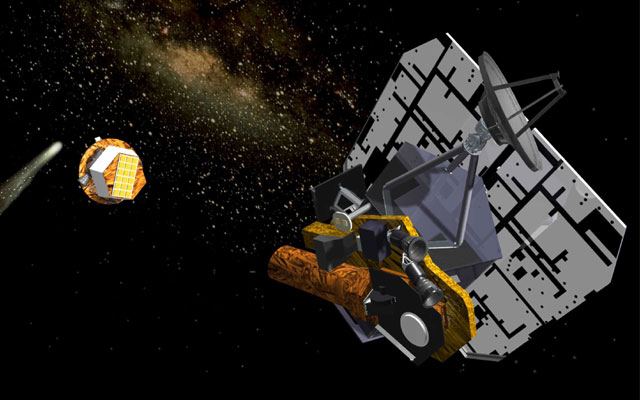
Epoxi is an extended mission that utilizes the already "in flight" Deep Impact spacecraft to explore distinct celestial targets of opportunity. The name Epoxi itself is a combination of the names for the two extended mission components: the extrasolar planet observations, called Extrasolar Planet Observations and Characterization (EPOCh), and the flyby of comet Hartley 2, called the Deep Impact Extended Investigation (DIXI). Note - while the mission name has been changed to EPOXI the spacecraft will continue to be referred to as "Deep Impact."
In early 2008 the Epoxi science team used the spacecraft's large telescope to observe five nearby stars with "transiting extrasolar planets," so named because the planet transits, or passes in front of, its star.
The spacecraft will then be put into "hibernation" only to be woken up in the fall of 2010 when it arrives in the vicinity of comet Hartley 2. On Nov. 4, 2010 Epoxi will conduct an extended flyby of Hartley 2 using all three of the spacecraft's instruments (two telescopes with digital color cameras and an infrared spectrometer.
NASA's Jet Propulsion Laboratory, Pasadena, Calif., manages EPOXI for NASA's Science Mission Directorate, Washington. The University of Maryland, College Park, is home to the mission's principal investigator, Michael A'Hearn. Drake Demming of NASA's Goddard Space Flight Center, Greenbelt, Maryland, is the science lead for the mission's extrasolar planet observations. The spacecraft was built for NASA by Ball Aerospace & Technologies Corp., Boulder, Colo.
NASA Epoxi site: www.nasa.gov/epoxi